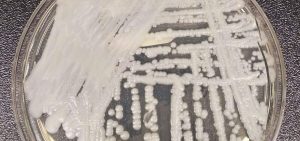News
The potentially deadly Candida auris fungus is spreading quickly in the U.S.
By: Ayana Archie | NPR
Posted on:
WASHINGTON (NPR) — The fungus Candida auris is becoming a more dangerous public health care threat, as the number of drug-resistant cases jumped in 2021, the Centers for Disease Control and Prevention said Monday.

About 30% to 60% of infected people have died from the yeast, though that is “based on information from a limited number of patients,” the CDC said.
“The rapid rise and geographic spread of cases is concerning and emphasizes the need for continued surveillance, expanded lab capacity, quicker diagnostic tests, and adherence to proven infection prevention and control,” CDC epidemiologist Dr. Meghan Lyman said.
Candida auris has been reported in more than 30 countries, and was first detected in the U.S. in 2016. Between then and December 2021, there have been 3,270 clinical cases in the U.S., in which patients have been infected, and 7,413 screening cases, in which the fungus was present in patients, but was not causing infection, the CDC said.
It can spread from person to person, or from interactions with contaminated surfaces.
The case count may have increased so quickly due to a lack of prevention, poor control methods in health care facilities and better efforts to detect cases, the CDC said.
The yeast is identified through testing bodily fluids, but it has alarmed the CDC because it is more difficult to distinguish from other yeasts and may be misdiagnosed, making it harder to contain.
9(MDU1ODUxOTA3MDE2MDQwNjY2NjEyM2Q3ZA000))

